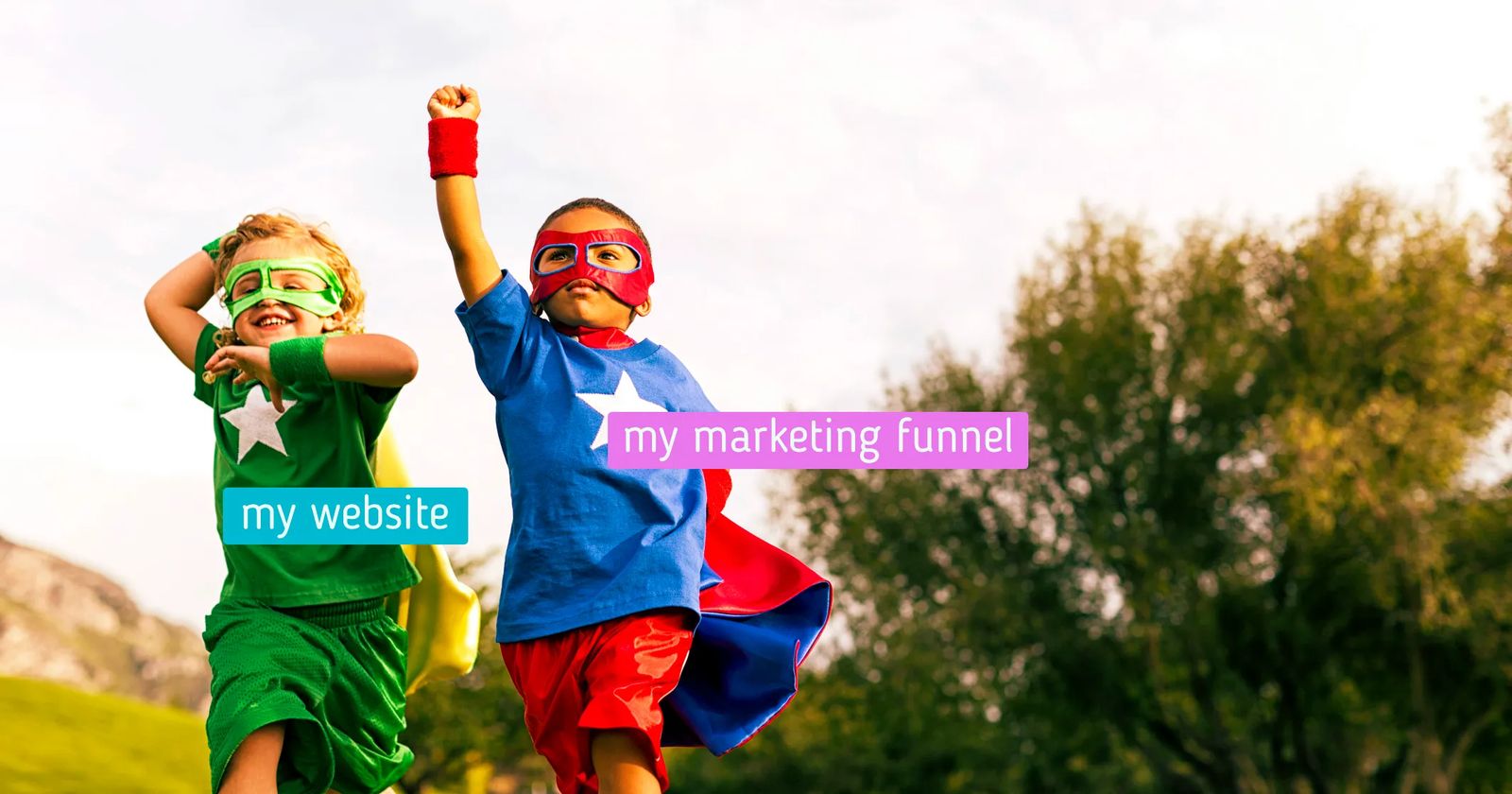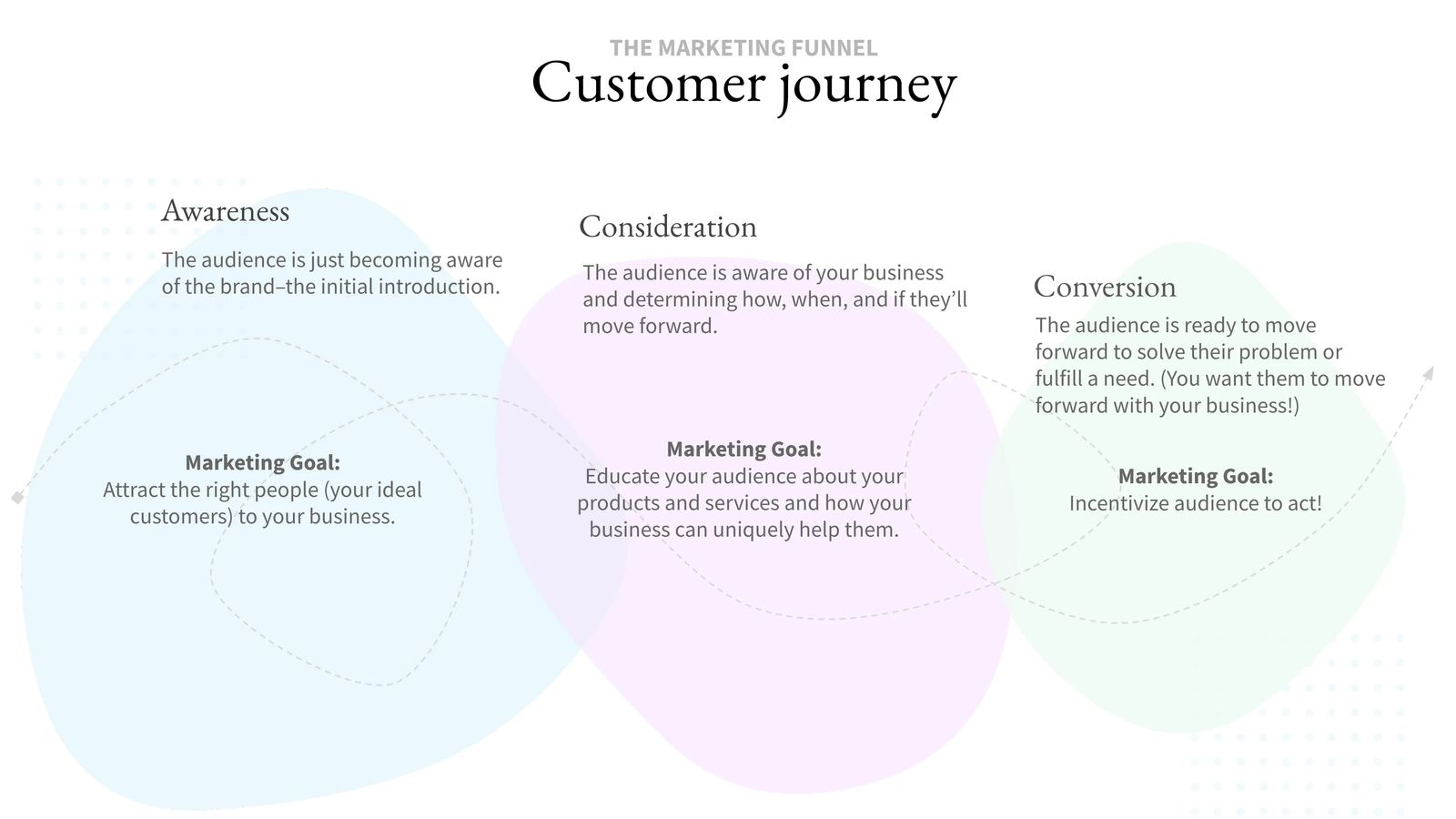
Your website needs help–Marketing funnel to the rescue!
Jessica Baldwin / Updated June 4, 2022
It happens all the time. Business owners launch a website expecting new customers to start calling, emailing, or filling out the contact form. After a few hundred people have visited the website, disappointment sets in due to a lack of leads and sales.
But, your website is just one piece of a larger marketing puzzle. Launching your website and then expecting people to find it won't work.
To convert customers and leads through your website, you need to look at the bigger picture.
Here are a few things to keep in mind:
1) People won't become a customer after one visit to your website.
Think about your behavior; how often do you visit a website or see an ad and decide to sign up or purchase something instantly? Not often, correct? Your website visitors are the same. They may visit your website, but maybe it's not the right time for them to make a purchase. Perhaps they want to do more research before choosing your product or service.
2) An effective marketing strategy will include frequency and repetition.
The more people hear or see something, the more they remember it. You'll need to repeat your message (the benefits of your product or service) to your target audience again and again. The goal is for your business to be top of mind when they're ready to buy.
3) You'll need to reach more people than you think.
Getting a few hundred people to your website is okay. But for most businesses, it won't be enough volume to start seeing leads and sales. Thousands of monthly website visitors may be necessary for your business to begin converting customers online.
4) It takes time.
Good marketing takes time. Your actions won't produce immediate sales because prospects need to go through the process of getting to know your business, researching if it's right for them, and deciding to buy! Plus, you'll need to build up a sizeable audience before any of this will work (see point #3). How long will it take? It's different for every business. Many experts recommend sticking with a strategy for at least six months before evaluating your results.
A website won't be effective all on its own. It needs help! Your marketing funnel has to support it. You'll need to create a strategy that markets to people at every funnel stage. Combine strategies both on and off your website for maximum effect.
What is a marketing funnel?
A marketing funnel illustrates the different stages of your customer's journey. It can help you visualize the logical path someone will take to become your customer.
As a marketing tool, the funnel can help you customize your message for people in each stage, guiding them along to the next until they convert.
The three primary stages of the funnel include awareness, consideration, and conversion, though some businesses will customize their funnel to add more steps.
Your conversion stage audience will always be smaller than the awareness stage audience. People who will never convert will become disinterested and stop paying attention to your messages. You'll also lose members of your audience throughout your funnel.
It's also important to note that different people will move through the funnel at different speeds. So, you should market to each group on an ongoing basis.

Awareness
At the awareness stage of the marketing funnel, people are just becoming aware of your brand.
Your goal at this stage should be to attract the right people's attention to your business. You want to engage with those who are most likely to (eventually) buy your product or service (your ideal customer).
Below are a few examples demonstrating how various businesses could market for the awareness stage.
- A landscaping company writes articles about plants that thrive in their local climate. They optimize each piece of content so that people will find them in an online search (search engine optimization or SEO) and make an initial visit to the website.
- A career coach writes inspirational posts on their LinkedIn profile to encourage others to find happiness within their current position or find a new one.
- An energy consultant sends cold emails to organizations that would benefit from reduced energy costs while reducing their carbon footprint.
- A new spa advertises its grand opening on streaming television services targeting people who live in their city.
You have hundreds of possibilities to get your business in front of people. Consider which tactics will resonate with your target audience and what makes the most sense for your brand.
The main point here is that your marketing for the awareness stage should provide the initial introduction of your brand to your target customers.
Consideration
At the consideration stage, your audience is now aware of your business, and they are considering how or if they'll move forward. They may research your company further or look at your competitors as part of their process.
Your goal at this stage is to educate them about your products and services and highlight the benefits they'll realize by working with your company.
Here's how our example businesses might market at this stage:
- The landscaping company collected emails on their articles by providing a free download, a PDF of landscaping layouts. With email addresses in their database, they are now sending newsletters to those prospects highlighting various plants, landscaping plans, and before and after photo galleries that illustrate the benefits of their products and services.
- Once the career coach has built up their LinkedIn followers, they begin promoting a free on-demand webinar that gives their prospects a small taste of what it would be like to work with them.
- The energy consultant continues to follow up with his email prospects, sending them a link to his website where they can calculate their potential energy savings. He'll also include reviews from current and past clients on the page.
- The new spa runs retargeting ads on Facebook and Instagram to people who visited their website in the last thirty days. They also continue their TV ads but change the message to focus on the benefits of their exclusive services.
Again, your tactics will depend on what makes sense for your business at this stage.
In the consideration stage, people are familiar with your business but have not become a customer yet. At this stage, the marketing you do should help them understand how they could benefit from your products or services.
Conversion
At the conversion stage, your prospect is ready to make a purchase!
You want them to buy from your business instead of a competitor. Your goal is to incentivize them to buy from you.
Here's how our example businesses may market to people in the conversion stage:
- The landscaping company decides to offer 20% off all plants when someone books a free consultation. They send the offer out to their email list.
- The career coach sends an email to people who watched the free webinar. They promote their no-obligation initial consultation and direct people to their website to book the appointment.
- The energy consultant follows up with leads that used his online calculator. He offers a free employee training session if the prospect signs up this month.
- The new spa promotes an exclusive membership plan available only to the first 100 people to sign up. It includes "extras" like complimentary champagne and a foot massage with every booked service. They continue using streaming television ads and retargeting ads on social media to deliver the message to their audience.
Many people don't need a discount or extra offer to convert. But, providing an incentive can help many of your prospects act sooner rather than later.
At the conversion stage, you're marketing to people aware of your business; they've spent time with your brand and have learned about your products and services. At this point, your marketing should help them take that last step to become your customer.
Each stage–awareness, consideration, and conversion–needs a tailored message and a way to deliver the message to the right audience.
So ask yourself:
- "How can I reach my ideal customer and attract them to my business?"
- "Once they are aware of my brand, how can I stay engaged with them over time? What information do they need to understand how my products and services can help them?"
- "How can I incentivize them to act?"
- "What message is important for each stage? How will I deliver the message to my audience?"
Your website is an essential piece of this process, but it can't produce results entirely on its own. Your marketing plan needs to combine strategies on and off your website to move your customers from awareness to conversion over time.
For more help on this topic, check out our webinar titled, "Win Customers with Your Website!"
Free workbook: Win customers with your website!
Create a strategy to get more leads and sales from your website.







